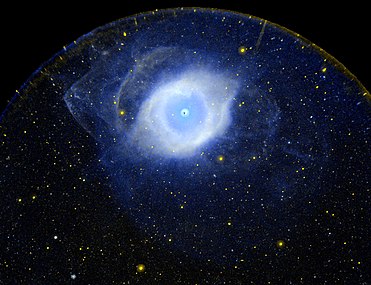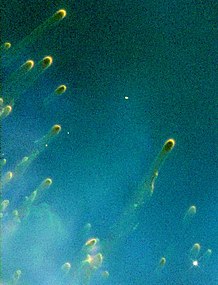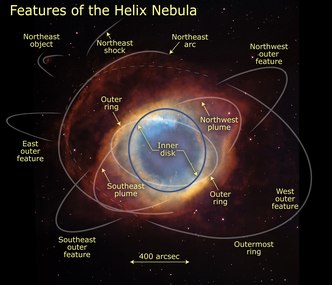Helix Nebula
Database links to Helix Nebula
The Helix Nebula (also NGC 7293 or Eye of God) is a planetary nebula in the constellation Aquarius with a magnitude of 6.30 mag and an apparent diameter of 16' × 28'. It was discovered in 1823 by the German astronomer Karl Ludwig Harding.
The Helix Nebula is the closest planetary nebula at a distance of about 650 light-years and thus the one with the largest apparent diameter. Therefore, details of the gas structure can also be resolved in its envelope.
In 1996, the Hubble telescope even made it possible for the first time to record nodes in the envelope that were previously unknown and allowed new conclusions to be drawn about the formation of planetary nebulae. But they also raised new questions. For example, it is not clear whether the knot nuclei were formed during the ejection of the envelope or whether they originate from activity of the star before the ejection. It is also controversial whether the knots are hydrodynamic structures (i.e., produced by instabilities) or whether they are produced by photoionization of the gas by the white dwarf at the center.
The nebula is also known as the eye of God, especially since the publication of a Hubble image of the nebula in 2003, the rumor spread on the Internet that the image of the nebula showed an event that occurs only every 3000 years.
· 
UV absorption: 135...270 nm (GALEX)
· .jpg)
IR image: blue 3.6...4.5 µm, green 5.8...8 µm, red 24 µm (Spitzer Space Telescope)
· 
Nodes inside the Helix Nebula (Hubble close-up)
· 
Structures of the Helix Nebula.
Search within the encyclopedia